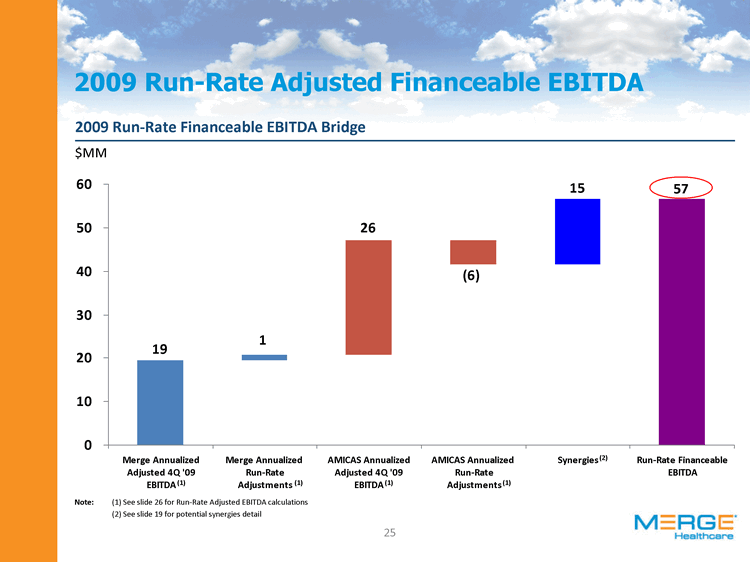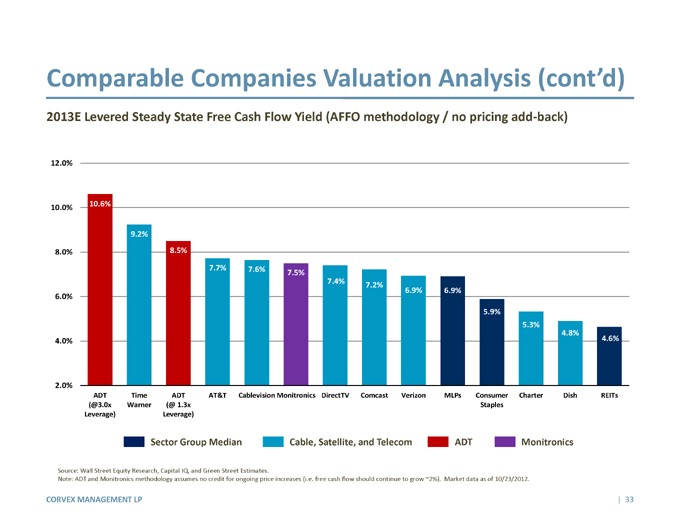How to Use Leveraged Free Cash Flow to Analyze Stocks
Post on: 14 Апрель, 2015 No Comment

Give a man a fish and you feed him for a day. Teach a man to fish and you feed him for a lifetime.
Since introducing my research system to Seeking Alphas readership, I have gotten a lot of positive feedback. Many have asked me how they can get access to the data I use to analyze stocks. I have already taught everyone how to use my Statistical Indicator Analysis (SIA) here:
So one of my four methods of analyzing stocks can be easily emulated and I even provide a free spreadsheet, for anyone who wants to try it on their own.
Unfortunately, this analysis requires that one have historical cash flow and capital expenditure data going back at least 20 years, which is not available to the average investor, as I had to create my own proprietary database from scratch. Over time I will continue to write articles on individual stocks and release my data one stock at a time, but since I am an Investment Advisor, I reserve my proprietary database, strictly to use for picking stocks for my clients.
What I will do though is give you a back of the envelope method, which is nowhere as complete as my system is, but nevertheless can assist the individual investor to analyze a stock in a little over a minute and with this one calculation, investors can go a long way in protecting themselves from making mistakes. It can also allow the individual investor to quickly review the portfolios of their own investment advisors or stock brokers and see if they are investing their assets properly for them. Again this is just a short cut, back of the envelope calculation but can go a long way in helping the individual investor preserve their capital and reduce the risk of overpaying.
So here it is:
Levered Free Cash Flow = Cash Flow from Operations Capital Expenditures
The Levered Free Cash Flow shows you the amount of cash available to pay shareholders after it has paid its debt. It can be a very important figure.
The formula looks like this
(Cash flow from operations) (Capital expenditures)
This number is very important because unlike earnings or income statements. which can be easily tweaked, it is very hard to manipulate cash flow. It is also important because the amount of cash a company has after paying its bills can be used to help make shareholders money. For example, a company can use earnings to reinvest in the company and/or to give out money to shareholders as dividends. If a company does have a high levered free cash flow it is best to find one that pays out dividends as well as reinvests in itself. You do not want to invest in a company that has lots of cash flow but foolishly spends it.
For those of you who have been following my work on Seeking Alpha, you will notice that the Levered Free Cash Flow ratio is just another name for Warren Buffetts Owner Earnings formula, which is Cash Flow from Operations Capital Expenditures. That same formula is the basis of my Price to Owner Earnings (P/OE) formula that I use in my writings.
Now for the good news!
Yahoo Finance, besides being kind enough to provide us with historical price action for stocks, also provides us with Levered Free Cash Flow for thousands of companies and its free for anyone to use.
All you need to do is go to this page:
(Please bookmark it as it will be your main page for this analysis from now on)
In about a minute you can do a back of the envelope quick calculation of Apple (NASDAQ:AAPL ) and know where you stand.
Let us Begin:
On that page if you go to the very bottom of the table you will see under Cash Flow Statement:
Levered Free Cash Flow (TTM) = $13.88
This basically means that over the last trailing twelve months that Apple has generated $13.88 Billion in Owner Earnings or Levered Free Cash Flow. So we now have that number, but how does it help us?
Well the next step is to move to the right of the table where you will find under Share Statistics the number for Shares Outstanding. Apples shares outstanding (TTM) = 921.8 million.
Therefore we have all the data we need and the calculation becomes an easy one;
$13880/921 = $15.07 per share.
So we then take Apples 2/11/2011 closing price of $356.85 and divide that by $15.07 and we get 23.68.
Thus Apple is trading at 23.68 times its Levered Free Cash Flow (Owner Earnings). If you return to my website page you will be able to download my 60 year backtest of Owner Earnings .
After reading my historical backtest you will see that I have proved that anyone buying stocks selling for 15 times or less a companys price to levered free cash flow would have done very well over the last 60 years, putting up results close to what Warren Buffett has achieved, which is only logical as he is the creator of the Owner Earnings ratio.
Being a conservative investor I like to buy at less than 15 times and sell always at 30 times regardless of the prospects of the company. But that is just how I do it and you can tweak it depending on your own tolerance for risk. Also remember that these are trailing numbers and not forward numbers and I like to go out one year in the future and analyze Owner Earnings for 2011 and then base my calculations on those results. But this as we said is just a short back of the envelope calculation to help you avoid overpaying on overbought stocks. To go out to 2011 you need to buy additional research such as Value Line.
So this back of the envelope method, in the end becomes a very powerful tool for the individual investor in its ability to allow such an investor to quickly analyze his or her portfolio. It can also analyze the portfolio that the investor’s investment advisor or broker has put the investor in and not only that, but ETF and Mutual Fund holdings can also be quickly analyzed using this method. So for those of you trapped in employee retirement programs that require you to invest in only a select group of mutual funds, you can now compare each fund’s holdings and see which is the more attractive option for you.
Always remember that this method is just a first step in analyzing a company and requires the investor to also read a companys annual reports and maybe do an SIA as well. There are also qualitative risks that must be factored in such as in Apples case, the health of Steve Jobs for example or the ability of Steve Ballmer as CEO of Microsoft (NASDAQ:MSFT ) to take the company where it needs to go etc. So there is no one shot magic formula for picking stocks, but using Levered Free Cash Flow and SIA, where the data is free to the individual investor through Yahoo Finance, can go a long way in protecting an individual investor from overpaying, not to mention how it can protect them from investing in the wrong stock tips that they may get from a friend or from Jim Cramer.
As I have calculated Apples numbers for you, I thought it would be good to show you the results of a few more highly popular companies, so you can see if you are doing your calculations correctly.
So here they are:
Levered Free Cash Flow = $316 million
Shares Outstanding = 131.40 million
Owner Earnings per share = 316/131.40 = $2.40
2/11/2011 closing price = $141.51
Price to Owner Earnings = $141.51/$2.40 = 58.96
Levered Free Cash Flow = $320.62 million
Shares Outstanding = 52.78 million
Owner Earnings per share = 320.62/52.78 = $6.07
Sirius XM Radio (NASDAQ:SIRI )
Levered Free Cash Flow = $231.14 million

Shares Outstanding = 3.93 billion
Levered Free Cash Flow = $17.55 Billion
Shares Outstanding = 8.40 billion
Owner Earnings per share = 17.55/8.40= $2.08
2/11/2011 closing price = $27.25
Price to Owner Earnings = $27.25/$2.08= 13.10
Levered Free Cash Flow = $5.74 Billion
Shares Outstanding = 319.94 million
Owner Earnings per share = 5740/319.94= $17.94
2/11/2011 closing price = $624.50
Price to Owner Earnings = $624.50/$17.94= 34.81
Newmont Mining (NYSE:NEM )
Levered Free Cash Flow = $1.48 Billion
Shares Outstanding = 493.06 million
Owner Earnings per share = 1480/493.06= $3.00
2/11/2011 closing price = $56.88
Price to Owner Earnings = $56.88/$3= 18.96
There you have it, a quick and easy test of your holdings based on a ratio that Buffett introduced to the world in 1986 — one that I have done a 60-year backtest of the DJIA on (1950-2009) to prove its validity. Please remember to always do your own Due Diligence and try to practice Capital Appreciation through Capital Preservation. Never buy a stock or act on a tip without doing your own analysis first. More people lose money from stock tips then from any other method I know, so the best tip I can give you is to never buy stock tips.
Disclosure: I am long CSCO, MSFT, GOOG.
Additional disclosure: No position in the others
Disclaimer: Always remember that these are the results of our research based on the methodology that I have outlined above and in other articles previously published. This research is provided as an educational tool and should not be considered investment advice, but just the results of our research. There are many ways to analyze a stock and you should never blindly follow anyones work without doing your own due diligence or by seeking the help of an investment advisor, if you so need one. As Registered Investment Advisors, we see it as our responsibility to advise the following: We take our research seriously, we do our best to get it right, and we eat our own cooking, but we could be wrong. Please note, investments involve risk and unless otherwise stated, are not guaranteed. Past performance cannot be used as an indicator to determine future results. Strategies mentioned may not be suitable for everyone. We do not know your personal financial situation, so the information contained in this communiqu represents the opinions of Peter Mycroft Psaras, and should not be construed as personalized investment advice. Information expressed does not take into account your specific situation or objectives, and is not intended as recommendations appropriate for you. Before acting on any information mentioned, it is recommended to seek advice from a qualified tax or investment adviser to determine whether it is suitable for your specific situation.














